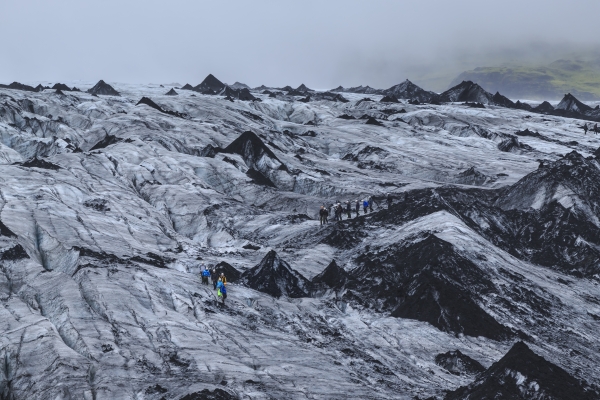Nine new sites were added to the UNESCO-supported Global Geoparks Network in September, among them was Reykjanes peninsula, located in southwest Iceland. This brings the number of Icelandic geoparks up to two.
Geoparks were first proposed as a UNESCO programme in 1999. Geoparks combine conservation, sustainable development and community involvement and the idea has been adopted by increasing numbers of Member States. 120 geoparks are found all over the world.

The Katla area was Iceland’s first geopark. The park is named after its most notorious volcanoes, Katla, and is 9542 square kilometres (3684 sq miles) in size. The park’s priority is „to protect the natural environment, promote local sustainable development, introduce local culture and place a strong emphasis on nature tourism“.
Iceland‘s new geopark, the Reykjanes Ridge, is part of the volcanic Mid-Atlantic Ridge separating the Eurasian and North American plates. The area is characterized by numerous “lava flows, lava shields, crater rows, geothermal fields, faults and fissures”. Krýsuvík, an area known for its explosion craters, is also found within the region.
Nine new sites were added to the UNESCO-supported Global Geoparks Network in September, among them was Reykjanes peninsula, located in southwest Iceland. This brings the number of Icelandic geoparks up to two.
Geoparks were first proposed as a UNESCO programme in 1999. Geoparks combine conservation, sustainable development and community involvement and the idea has been adopted by increasing numbers of Member States. 120 geoparks are found all over the world.

The Katla area was Iceland’s first geopark. The park is named after its most notorious volcanoes, Katla, and is 9542 square kilometres (3684 sq miles) in size. The park’s priority is „to protect the natural environment, promote local sustainable development, introduce local culture and place a strong emphasis on nature tourism“.
Iceland‘s new geopark, the Reykjanes Ridge, is part of the volcanic Mid-Atlantic Ridge separating the Eurasian and North American plates. The area is characterized by numerous “lava flows, lava shields, crater rows, geothermal fields, faults and fissures”. Krýsuvík, an area known for its explosion craters, is also found within the region.







